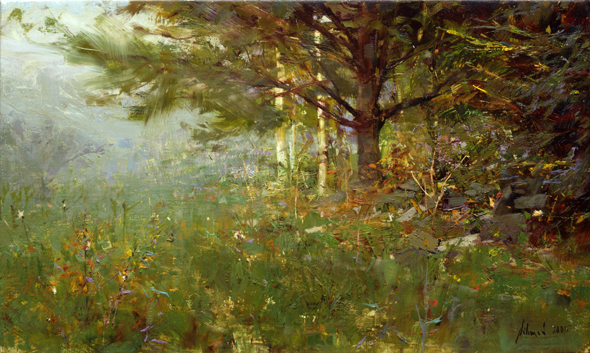Thus far, two lessons have been dedicated to canvas preparation, and emphasis placed on the importance of a good surface on which to paint. The benefits of working on a custom primed lead ground have been explained and illustrated through the use of examples, but little has been covered regarding the working properties of this type of canvas.
Painting on a lead primed surface is unique, and can present challenges if you are unfamiliar with its behavior. It is common to experience a bit of a learning curve with this type canvas, especially if you are switching from using a more absorbent kind. Successful and manageable working conditions on a lead primed canvas or panel requires a bit of knowledge and experience in the way oil paint can be used and applied. Compared to more absorbent commercial canvases, painting on your own hand-made lead primed surface can feel like slick and slippery business.
This lesson will explain and illustrate ways oil paint can be used on a lead ground, and assist in unlocking the invaluable working properties that this surface provides. It will present suggestions for application that yield favorable painting conditions, and recommend ways to avoid ending up in pools of muddy paint. High-resolution images are included as working examples. In addition, this installment will revisit the painting featured in Richard’s instructional DVD, White Pine, by highlighting a few key developmental stages that further demonstrate manageable paint application techniques. To assist in your studies, included is a high-resolution image of the final piece to be used in conjunction with the video.


